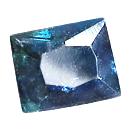|
Click on a letter above to view the list of gems. |
|
|
|
|
|
|
|
|
Kulanite |
|
| | |
| Discovered in 1975; IMA status: Valid (IMA approved 1976) | ||
|
| ||
|
Chemistry |
| |||||||||||||||||||||||||||||||||||||||||||||
|
| ||||||||||||||||||||||||||||||||||||||||||||||
|
Ba(Fe2+,Mn,Mg)2Al2(PO4)3(OH)3 | ||||||||||||||||||||||||||||||||||||||||||||||
|
|
Barium Iron Manganese Magnesium Aluminum Phosphate Hydroxide | |||||||||||||||||||||||||||||||||||||||||||||
|
Molecular Weight: |
637.65 gm | |||||||||||||||||||||||||||||||||||||||||||||
|
Composition: |
| |||||||||||||||||||||||||||||||||||||||||||||
|
|
||||||||||||||||||||||||||||||||||||||||||||||
|
|
||||||||||||||||||||||||||||||||||||||||||||||
|
|
||||||||||||||||||||||||||||||||||||||||||||||
|
|
||||||||||||||||||||||||||||||||||||||||||||||
|
|
||||||||||||||||||||||||||||||||||||||||||||||
|
|
||||||||||||||||||||||||||||||||||||||||||||||
|
|
||||||||||||||||||||||||||||||||||||||||||||||
|
|
|
Classification |
|
|
| |
|
Phosphates | |
|
7/B.29-20 | |
|
|
8 : PHOSPHATES, ARSENATES, VANADATES |
|
Related to: |
Bjarebyite Group, Kulanite - Penikisite Series. |
|
Synonyms: |
IMA1975-012 |
|
|
|
|
Crystal Data |
|
|
|
|
|
As plates, to 1.5 cm, tabular on {101}, with {101}, {100}, {001}, {011}, {161}, several others; aggregated in rosettes. Commonly in zoned intergrowth with penikisite. |
|
|
None |
|
|
|
|
|
Physical Properties |
|
|
|
|
|
{010} Good, {100} Good |
|
|
Irregular/Uneven, Conchoidal |
|
|
Brittle |
|
|
4.0 |
|
|
3.91 (g/cm3) |
|
|
None |
|
|
Not Radioactive |
|
|
Other: |
S |
|
|
|
|
Optical Properties |
|
|
|
|
|
Blue, Blue-Green, Green, Black-Green |
|
|
Transparent to Translucent |
|
|
Adamantine, Vitreous |
|
|
1.703 - 1.723 Biaxial ( + ) |
|
|
0.020 |
|
|
Very Stong and asymmetrical; r > v |
|
|
X = brownish green; Y = green; Z = very pale brown. |
|
|
|
|
|
Occurances |
|
|
|
|
|
Geological Setting: |
A weathering product in fractures in sideritic iron formation (Cross-cut Creek, Canada); as disseminations and veinlets in granite pegmatite (Xiyuantou, China). |
|
Common Associations: |
Anatase, Arrojadite, Brazilianite, Fluorapatite, Goyazite, Penikisite, Quartz, Rapidcreekite, Siderite (Cross-cut Creek, Canada); Montebrasite, Palermoite, Triphylite (Palermo #1 mine, New Hampshire, USA) |
|
Type Locality: |
Rapid Creek, Dawson Mining District, Yukon Territory, Canada |
|
Year Discovered: |
1976; (IMA approved 1976) |
|
View mineral photos: | |
|
|
|
|
More Information |
|
|
|
|
|
| |
|
|
|
|
Kulanite
comes from Cross-cut Creek, 1.5 km upstream from the
confluence with Rapid Creek, Big Fish-Blow River area,
Yukon Territory, Canada. In the White Picacho district,
Maricopa and Yavapai Counties, Arizona, and at the Palermo
#1 mine, North Groton, Grafton County, New Hampshire,
USA. From the Xiyuantou pegmatite, Nanping, Fujian Province,
China. |
|
|
We
have not photographed our Kulanite gems. Please
check back soon. |
